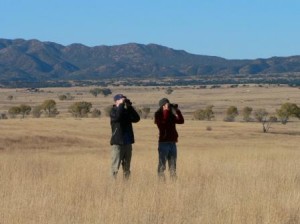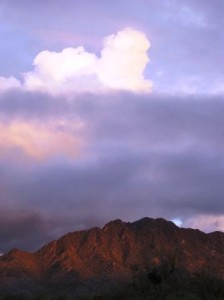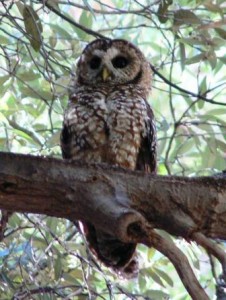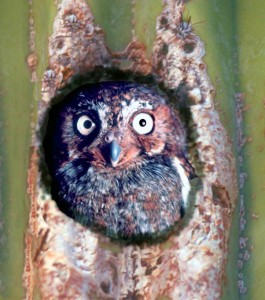The Global IBA Program
The purpose of the Important Bird Area Program is to identify a network of sites that maintain the long-term viability of wild bird populations while engaging the public to conserve those areas of critical habitat.
The Important Bird Area Program exists on several scales. This is a global program founded by BirdLife International the 1980’s. Since then, over 8,000 sites in 178 countries have been identified as IBAs.
The IBA partner for the United States is the National Audubon Society which began to establish individual IBA programs state by state in 1995. The NAS oversees all of the state-level IBA Programs. The US IBA Program has identified over 2,500 sites covering more than 370 million acres of habitat!
The Arizona IBA Program
The Arizona IBA Program was established in 2001 and is co-administered by Audubon Arizona and the Tucson Audubon Society. Scott Wilbor of the Tucson Audubon Society laid the groundwork for and coordinated the AZ IBA Program solo from 2001 through 2004 and continued with the program until 2011. AZ IBA is currently coordinated by Jennie MacFarland at Tucson Audubon and Tice Supplee at Arizona Audubon.
The Arizona Important Bird Areas (IBA) Program is an exciting, active, field-oriented, community-engaged, science-based and conservation-focused program to benefit Arizona’s bird populations of greatest conservation concern, and other native biodiversity, and their most critical habitats and sites.
The AZ IBA Program also works in partnership with the Arizona Game and Fish Department (through the Arizona Bird Conservation Initiative), the Sonoran Joint Venture, the Intermountain West Joint Venture, Arizona State Parks, U.S. Fish and Wildlife Service.
There is a strong citizen-science component to the Arizona IBA Program with much of the data used to create new IBAs and monitor existing IBAs coming from surveys conducted by trained volunteer surveyors. The program does utilize other sources of data such as e-Bird, Christmas Bird Counts, Breed Bird Survey Data as well as data collected by agencies such as Arizona Game and Fish, the Forest Service and the National Park Service.
The AZ IBA Program has a strong avian science component as well. Decisions regarding new IBAs are made by the Arizona IBA Science Committee comprised of researchers and managers from around the state. Once a year the committee meets and reviews the submitted proposals for new IBAs and decides if the data is compelling enough to warrant an IBA designation.
Another major goal of Arizona’s IBA Program is to engage the public and create a higher awareness of the value of these habitats and the need to conserve them. The Arizona IBA Program has identified 48 IBAs (17 of which have Global IBA Status) covering 3.38 million acres of habitat.
The Avian Science Initiative of the AZ IBA Program is part of the state Coordinated Bird Monitoring (CBM) program, overseen by the Arizona Bird Conservation Initiative (ABCI) at Arizona Game and Fish Department. Audubon has partnered with Maricopa Community Colleges, the Phoenix Unified School District, Arizona State University, and the University of Arizona to involve student participation in the program, including GIS projects, riparian habitat monitoring, IBA bird monitoring, and IBA stewardship projects.
Four avian habitat conservation plans/guides for AZ IBAs, as well as a riparian habitat management guide for landowners have been produced by the AZ IBA Program. Significant conservation successes have been achieved in terms of new acres under conservation (including restoration) management since the IBA program inception with Audubon. The AZ IBA Program works in partnership with the Arizona Game and Fish Department (through the Arizona Bird Conservation Initiative), the Sonoran Joint Venture, the Intermountain West Joint Venture, Arizona State Parks, U.S. Fish and Wildlife Service, U.S. Forest Service, BLM, and various non-governmental organizations, colleges, and universities.
This is the program’s initiative to collect science-based ornithological data in order to:
- Rigorously identify IBAs in Arizona through review by our AZ IBA Program Science Committee,
- Contribute ornithological inventory and monitoring data to Arizona Game and Fish Department, through the Coordinated Bird Monitoring Program of the Arizona Bird Conservation Initiative, and
- Provide site and species specific ornithological survey results to our agency and land manager partners in order to benefit the conservation of avian species of conservation concern.
The Different IBA Designations
IBAs are classified into three levels: State, Continental and Global. The state designation can only be assigned by a state committee of researchers and managers that determine if a site has significant numbers of a suite of species of conservation concern and restricted ranges. A State IBA can then be elevated to a Continental IBA if a species of Continental Concern is documented in high enough numbers. This is a specific list with specific thresholds determined by a Continental Committee. For instance, a State IBA can be designated Continental if 120 Elf Owls are shown to be present. The designation of Global IBA works much the same way with the list and thresholds of species being determined by a Global Committee.
Map of all 48 Arizona IBAs can be found here
See other Arizona IBA Program web pages at:
http://www.tucsonaudubon.org/azibaprogram
http://az.audubon.org/BirdSci.html
For AZ IBA site information on National Audubon IBA page:








